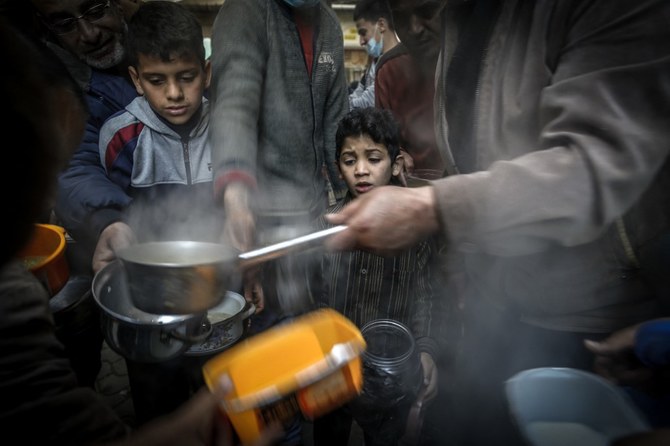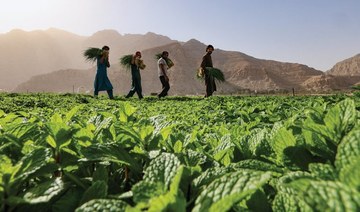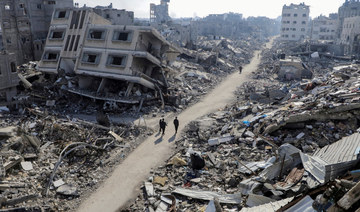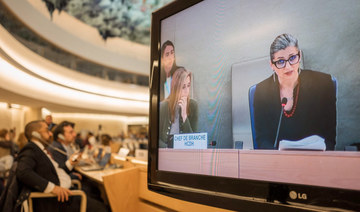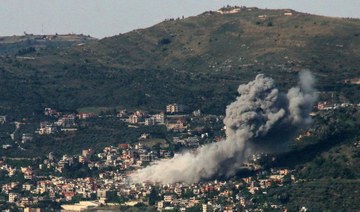DUBAI: Harnessing science, technology and innovation will be key to ensuring sustainable, inclusive and resilient food systems by 2030, experts have said ahead of September’s UN Food Systems Summit in New York.
However, much needs to be done to ensure the world is prepared to feed a population that is projected to grow from 7.9 billion today to 9.7 billion by 2050 — an almost 10-fold leap since 1950.
“Everybody is concerned about the transformation of food systems,” Jean-Marc Faures, program leader at the Food and Agriculture Organization (FAO) Regional Office for the Near East and North Africa (NENA), told Arab News.
“We are all part of this global food system that has done marvels in terms of feeding a growing global population. But it has a lot of shortcomings that need to be addressed if we want to achieve the sustainable development goals.”
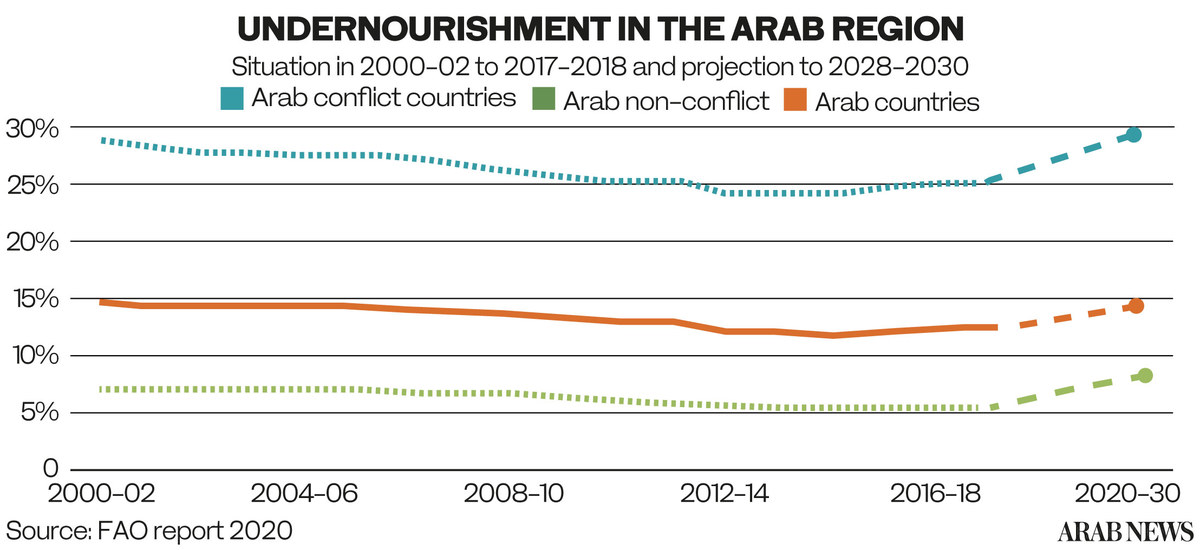
Launched by the UN General Assembly in 2015, the sustainable development goals, or SDGs, are a collection of 17 interlinked global targets designed to be a “blueprint to achieve a better and more sustainable future for all” by 2030.
The NENA region has a finite supply of arable land and freshwater, which limits its capacity to produce its own food and forces governments to rely heavily on imports. The way food is produced must improve through bold innovations along the entire chain — from the quality of products, seeds and animal breeds, to the resistance of staple crops to drought.
“Climate change is also a major challenge to agricultural production because it is bringing more uncertain climate and more variability in precipitation, which is fundamental for agricultural production,” Faures said.
“So, we need crops that can withstand a long period of time without rain, or crops and animals that can handle increasing heat waves. These climate-change issues need a response, and a lot of it will need to come from technologies.”
Agricultural technologies, also known as agritech, made major strides during the 20th century, including the dawn of synthetic fertilizers, pesticides and mechanization. In the latter half of the century, further leaps were made in genetic modification, drip irrigation, hydroponics, aquaponics and aeroponics, to name but a few.
Then, in the early decades of the new millennium, digital technologies began to make their farming debut, in everything from data collection and computation for improving crop efficiency to robotics and driverless tractors.
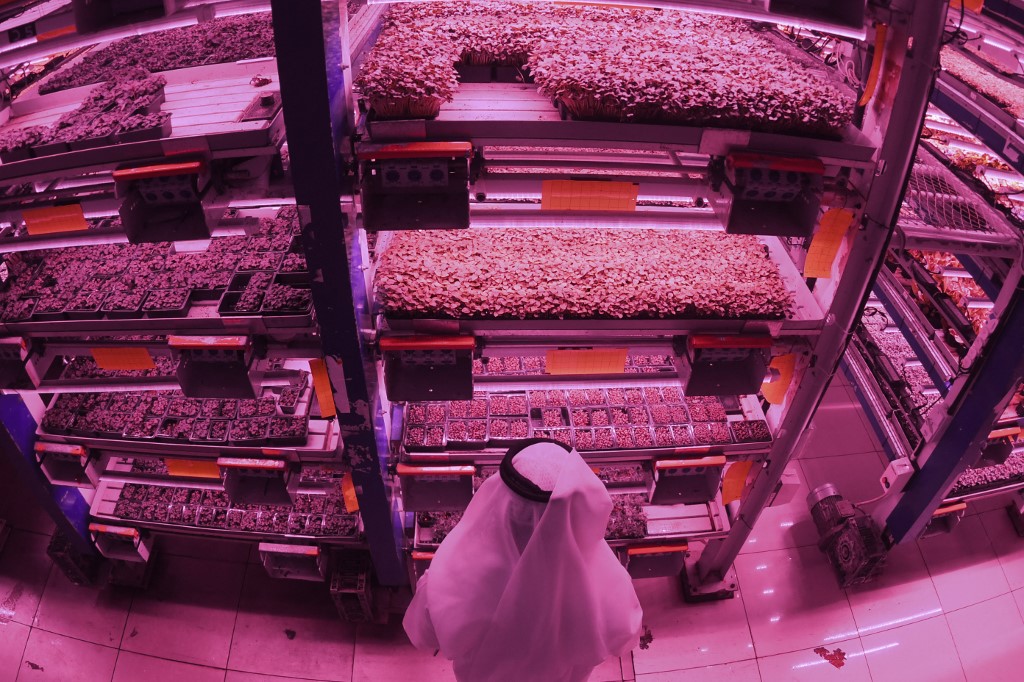
A picture shows the UAE's al-Badia Farms in Dubai, an indoor vertical farm using innovative hydroponic technology to grow fruits and vegetables all year round, on August 4, 2020. (AFP/File Photo)
With the right investment and training, tomorrow’s farmers could be making regular use of artificial intelligence, remote sensing, geographic information software, virtual reality, drone technology, application programming interface (API) technology, and a host of precision tools for measuring rainfall, controlling pests and analyzing soil nutrients.
However, despite the march of progress, food production has not been as “green” as it could have been. Fertilizers, pesticides and other chemicals have polluted soils and waterways, and harmed the earth’s biodiversity. Although they kill off pests, these toxic agents have also proven harmful to other species and even humans.
“We’ve seen a series of issues coming out of what, at the time, was considered a great technological success, and now we need to address these issues,” Faures said.
“We’ve lost so much in biodiversity — from crops to animals — mostly due to agriculture. It’s the number one sector affecting the environment, so now is really the time to find another way to address food production, because the environmental impact has been too much in all possible ways.”
Chief among the issues that will be addressed at the UN Food Systems Summit is humanity’s equitable access to safe and nutritious food. With crisis and conflict blighting many corners of the NENA region, food insecurity has become widespread. “It is unacceptable,” Faures said. “We need to continue fighting hunger in all possible ways.”
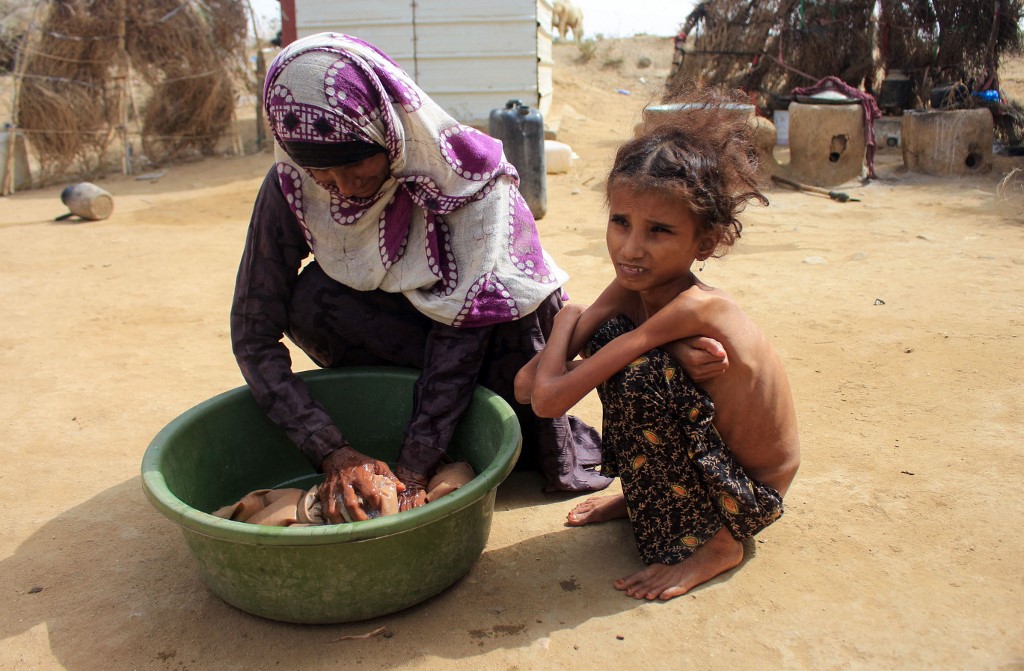
Yemeni 10-year-old girl Ahmadia Abdo, who weighs ten kilograms due to acute malnutrition, squats as her mother washes clothes at a camp for the internally displaced in the northern Hajjah Governorate. (AFP/File Photo)
Conflict has been the primary driver behind a rise in hunger across the NENA region since 2015-17, according to a report published in June by a coalition of aid agencies, including the FAO.
The report, titled “Regional Overview of Food Security and Nutrition in the Near East and North Africa 2020: Enhancing Resilience of Food Systems in the Arab States,” estimated that around 51.4 million people, or about 12.2 percent of the population, in the region were already going hungry before the COVID-19 pandemic, which has further exacerbated disruptions to supply chains and livelihoods.
Around 137 million people in the region were deemed to be either moderately or severely food insecure, lacking regular access to sufficient and nutritious food — a trend that is expected to worsen unless measures are taken to improve systemic resilience.
INNUMBERS
*12.2% - NENA population that was hungry before the pandemic.
*137m - NENA population moderately or severely food insecure.
*75m - NENA people who may be affected by hunger by 2030.
*50% - Arab region’s population unable to afford a healthy diet.
* 720-811m - People who faced hunger worldwide in 2020.
(Source: FAO)
As a result of this trend, the region will almost certainly fail to meet its SDG commitment to eliminate hunger by the end of the decade. In fact, based on its current trajectory, the number of people affected by food shortages is expected to rise above 75 million by 2030.
What is especially troubling about its findings is the impact that hunger and food insecurity is having on public health and child development. According to the report’s 2019 estimates, 22.5 percent of children in the region under the age of 5 were stunted, 9.2 percent wasted and 9.9 percent overweight.
Also owing to poor nutrition, 27 percent of the region’s adult population are classified as obese, making the Arab region the second-worst offender for obesity in the world. The same dietary shortcomings have left 35 percent of women of reproductive age anemic.
Although conflict was found to be the leading cause of food insecurity, the report also highlighted the weaknesses of regional food systems, hampered by the effects of climate change, bad policymaking, and economic disruption even before the global pandemic.
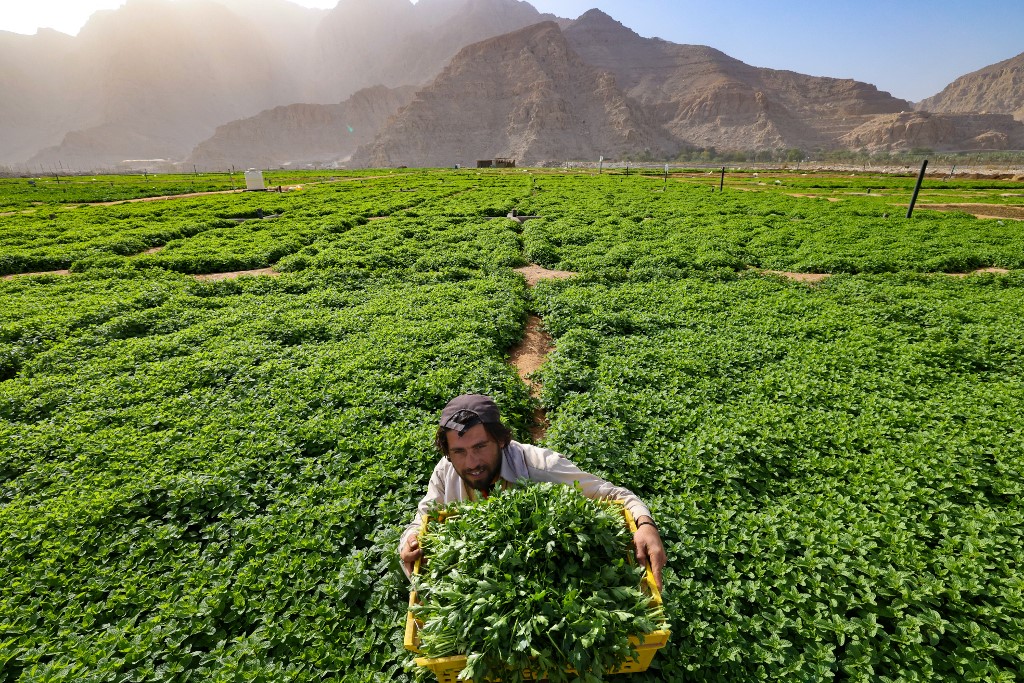
A farmer havests leafy vegetables in a field on the mountain range of Jabel Jais, in the UAE emirate of Ras Al-Khaimah. (AFP/File Photo)
“In our region, the pandemic has severely disrupted the food chain for animals. Farmers who rear livestock need to buy food for their animals,” Faures said.
“At the beginning of the pandemic, everything stopped, and they didn’t have food for animals. This is just one example, but it was the same for many other inputs and the system wasn’t ready to sustain a shock like that.”
Other pressures on food supply chains are water scarcity, inequality, population growth, mass migration and a strong dependence on imports. Indeed, the NENA region imports about 63 percent of its food — the highest import dependency of the world’s five regions.
Another driver of NENA food insecurity is the high cost of healthy eating, with nutritious diets that include plenty of fresh fruit and vegetables, pulses, meat and dairy estimated to cost about five times more than one that meets basic energy needs through starchy staples such as rice and bread.
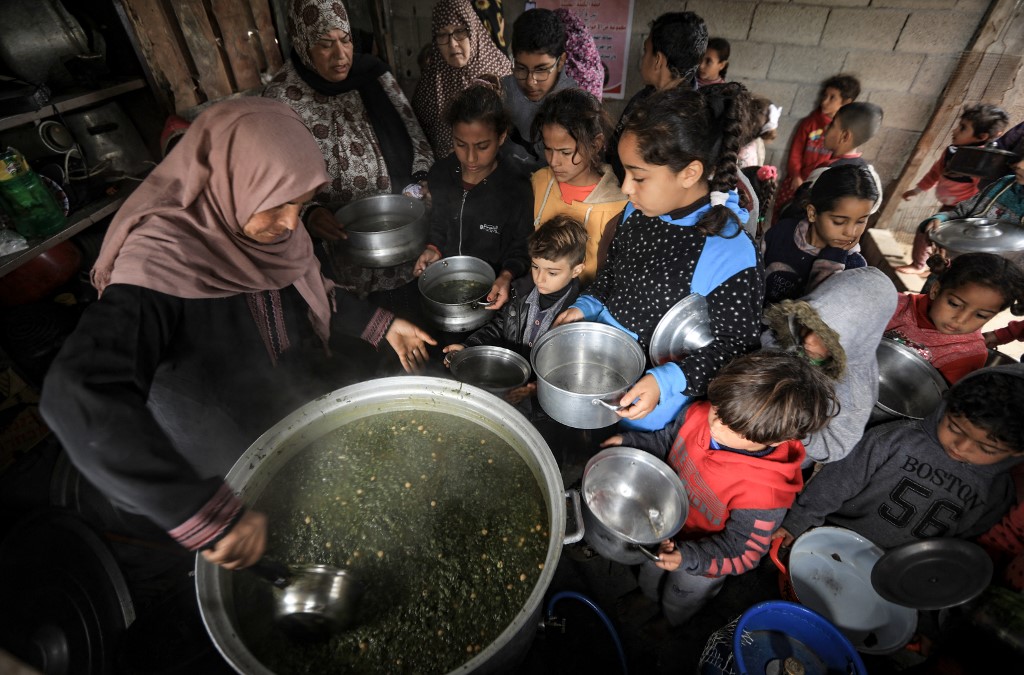
Palestinian volunteer cook Amal Abu Amra, 41, distributes food prepared with ingredients obtained from donors, to help needy families in an impoverished neighbourhood in Gaza City. (AFP/File Photo)
Healthy diets are unaffordable for more than 50 percent of the Arab region’s population — higher than the global average of 38 percent.
“Consumers are disconnected from food production,” Faures said. “But their choices and the way they treat food has an impact on their health and the whole food chain, especially when there are consumption patterns that are much less sustainable than others and people need to be aware of this.”
Several factors are out of the public’s control. Over the course of 2020 and 2021, the NENA region was blighted by desert locusts, which ravaged cropland. Faures said that the international community and regional powers should work together to establish systems to combat these plagues, ensuring such shocks do not translate into famines.
“We need to provide some kind of social protection for people hit hard by these,” he said.
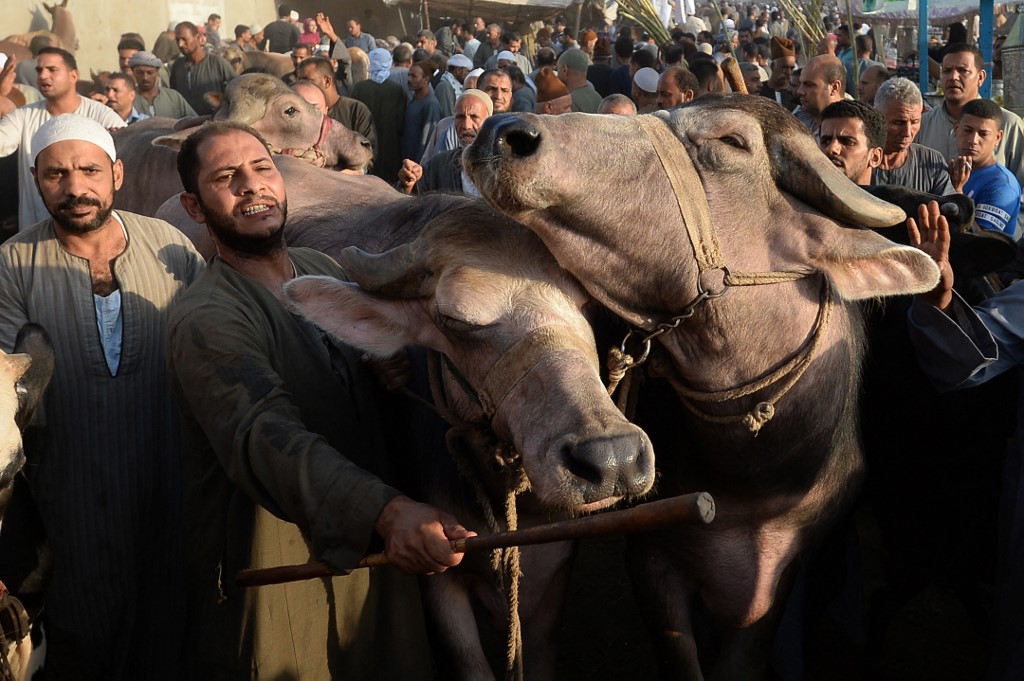
Egyptian cattle traders gather at the Ashmun market in Egypt's Menufia Governorate, as they try to sell livestock to customers ahead of the annual Muslim Eid Al-Adha holiday. (AFP/File Photo)
Although technology and innovation are fundamental elements in helping alleviate the burden, the world cannot rely on these alone. According to Faures, efforts must be directed toward promoting healthier foods, more sustainable production and consumption, resilience to shocks and a better life for food producers.
“There will be innovation that will contribute to one or the other and maybe even trade-offs between these dimensions of sustainability,” he said. “But there will also be the need to make choices.”
Faures wants to see good governance and private-sector incentives, in addition to an increase in the role of civil society, as facilitators of change in the way food is produced.
“There is a big role for the private sector to play because it is an essential element in today’s food system,” he said. “We are all in this game together.”
----------------
Twitter: @CalineMalek



